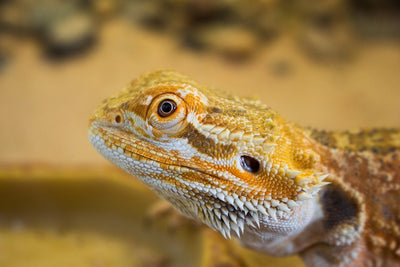Proper Nutrition for Cats: The Role of Dry Food

Proper nutrition is essential for the overall health and well-being of our feline friends. And when it comes to their diet, one common question that arises is the role of dry food. Many cat owners wonder if feeding their cats dry food is a good choice or if it can have negative effects on their health.
Dry food, also known as kibble, is a convenient option for cat owners as it doesn't spoil quickly and can be left out for the cat to graze throughout the day. It is often formulated to provide a balanced diet, containing the necessary nutrients and vitamins that cats need to thrive.
However, there are also concerns and misconceptions surrounding the feeding of dry food to cats. Some worry that dry food can lead to dehydration in cats, while others believe it can contribute to obesity. So, what is the truth? Are these concerns valid or are they simply misconceptions?
Join us as we dive into the world of feline nutrition and uncover the truth about feeding cats dry food. We will explore the benefits, address the concerns, and provide expert insights to help you make informed decisions about your cat's diet. So, let's get started and unravel the mysteries surrounding the role of dry food in a cat's diet.
Factors to Consider When Feeding Your Cat
When it comes to feeding your cat, there are several factors to consider. One important factor is the age and life stage of your cat. Kittens, adult cats, and senior cats have different nutritional needs, so it's important to choose a cat food that is appropriate for their age.
Nutritional Needs Based on Age
- Kittens: Kittens need food that is high in protein and fat to support their growth and development.
- Adult Cats: Adult cats have different dietary requirements than kittens. Their food should provide the necessary nutrients for maintenance and overall health.
- Senior Cats: Senior cats may require a diet that is lower in calories to help them maintain a healthy weight.
Activity Level and Energy Requirements
Another factor to consider is your cat's activity level and energy requirements. Cats that are more active and playful will require more calories than cats that are more sedentary. If your cat spends a lot of time outdoors or engages in regular exercise, they may need a cat food that is higher in calories to meet their energy needs. On the other hand, if your cat is less active, they may require a cat food that is lower in calories to prevent weight gain.
Special Dietary Needs
It's also important to take into account any health conditions or special dietary needs that your cat may have. For example, if your cat has a food allergy or sensitivity, you may need to choose a cat food that is free from certain ingredients. Similarly, if your cat has a medical condition such as kidney disease or diabetes, they may require a special diet that is tailored to their specific needs.
Consult with Your Veterinarian
When considering these factors, it can be helpful to consult with your veterinarian. They can provide guidance on the best cat food options for your cat based on their individual needs. Additionally, they can offer advice on portion sizes and feeding schedules to ensure that your cat is getting the right amount of food.
When it comes to feeding your cat, it's important to consider their age and life stage, activity level and energy requirements, as well as any health conditions or special dietary needs they may have. By taking these factors into account and consulting with your veterinarian, you can ensure that your cat is getting the nutrition they need to thrive.
Feeding Your Cat Dry Food: Portion Sizes and Adjustments
When it comes to feeding your cat dry food, it's important to know the recommended daily amounts. This section will provide you with general guidelines for portion sizes, factors that can influence the amount of dry food needed, and tips for adjusting portion sizes based on your individual cat's needs.
General Guidelines for Dry Food Portion Sizes
- Most adult cats need about 1/4 to 1/2 cup of dry food per day.
- Portion sizes may vary depending on your cat's specific needs.
Factors that Can Influence the Amount of Dry Food Needed
- Age, weight, activity level, and overall health are factors that can influence portion sizes.
- Indoor cats with sedentary lifestyles may require fewer calories compared to outdoor cats.
- Overweight or underweight cats may need adjusted portion sizes.
- Consult with your veterinarian for personalized recommendations.
Tips for Adjusting Portion Sizes Based on Your Cat's Needs
- If your cat is gaining or losing weight, adjust portion sizes accordingly.
- Gradually make small adjustments to avoid digestive upset.
- Reduce portion sizes for overweight cats and monitor their weight over time.
- Increase portion sizes or switch to a higher-calorie cat food for underweight cats.
- Consult with your veterinarian for personalized recommendations.
Monitoring and Adjusting Your Cat's Food Intake
Feeding our cats properly is important for their health and well-being. However, it's easy to overfeed or underfeed them, which can lead to various health issues. To ensure that your cat is getting the right amount of food, it's essential to monitor their food intake and make adjustments when necessary.
Signs of Overfeeding
- Weight gain: If your cat is becoming overweight or obese, it may be a sign that they are eating too much.
Signs of Underfeeding
- Weight loss or malnourishment: If your cat is losing weight or appears malnourished, it could be a sign that they are not getting enough food.
Regular Weigh-Ins
Regular weigh-ins are an important part of monitoring your cat's food intake. By weighing your cat regularly, you can track their weight and ensure that they are maintaining a healthy body condition. If you notice any significant changes in weight, it may be a sign that adjustments need to be made to their diet.
Weight Gain:
- If your cat is gaining weight, you may need to reduce their food portions or switch to a lower-calorie diet.
Weight Loss:
- If your cat is losing weight, it may be necessary to increase their food intake or switch to a more nutrient-dense diet.
While monitoring and adjusting your cat's food intake is important, it's always a good idea to consult with a veterinarian for personalized advice. They can provide guidance on the appropriate amount of food to feed your cat based on their age, weight, and overall health. Additionally, a veterinarian can help identify any underlying health issues that may be affecting your cat's appetite or weight.
Establishing a Feeding Schedule
One of the most important aspects of cat care is establishing a feeding schedule. Cats thrive on routine, and having a consistent feeding schedule can help maintain their overall health and well-being. When it comes to feeding your cat, there are a few key factors to consider:
- Determining the appropriate amount of food
- Type of food to offer
- Proper food storage and handling
- Gradual transition to new food or feeding routine
Determining the Appropriate Amount of Food
The amount of food you should feed your cat depends on their age, weight, activity level, and any specific dietary requirements they may have. Consult with your veterinarian to get a recommendation tailored to your cat's individual needs. Once you have the recommended amount of food, divide it into several small meals throughout the day. Aim for at least two to three meals a day, spaced evenly apart. This will help with digestion, prevent overeating, and maintain a healthy weight.
Type of Food to Offer
Choose a high-quality, nutritionally balanced cat food that meets your cat's specific dietary needs. Whether you opt for dry food, wet food, or a combination of both, make sure to read the labels and choose a brand that uses real meat as the main ingredient and avoids artificial additives and fillers.
Proper Food Storage and Handling
Proper food storage and handling are crucial to ensure the freshness and safety of your cat's meals. Follow these guidelines:
- Opened cans of wet food should be refrigerated and used within a few days to prevent spoilage.
- If you're feeding your cat dry food, store it in an airtight container to maintain its freshness and prevent it from becoming stale or contaminated.
- Always wash your hands before and after handling your cat's food to prevent the spread of bacteria.
- Clean your cat's food and water bowls regularly with hot, soapy water. Rinse thoroughly to remove any leftover food particles or bacteria. This will help prevent the growth of harmful bacteria and keep your cat's feeding area clean and hygienic.
Gradual Transition to New Food or Feeding Routine
If you're planning to make any changes to your cat's food or feeding routine, do so gradually to avoid digestive upset or refusal to eat:
- When transitioning to a new food, start by mixing a small amount of the new food with their current food and gradually increase the ratio over the course of a week or two. This will allow your cat's digestive system to adjust to the new food without causing any discomfort.
- If you're planning to change your cat's feeding schedule, make the transition gradually by adjusting the timing of their meals by a few minutes each day until you reach the desired schedule. This will help your cat adapt to the new routine without causing any disruption to their eating habits.
Choosing the Right Dry Food for Your Cat
Choosing the right dry food for your cat is an important decision that can impact their health and well-being. There are several factors to consider when making this choice, including understanding cat food labels and ingredients, considering the quality and nutritional value of the food, and taking into account your cat's preferences and dietary sensitivities.
Understanding Cat Food Labels and Ingredients
When it comes to understanding cat food labels and ingredients, it can be overwhelming to decipher all the information on the packaging. Here are some key points to keep in mind:
- Look for labels that provide clear and detailed information about the ingredients used in the food.
- Ideally, the first ingredient listed should be a high-quality source of animal protein, such as chicken or fish.
- Avoid foods that contain fillers or by-products, as these may not provide the necessary nutrients your cat needs.
Quality and Nutritional Value
Considering the quality and nutritional value of the food is essential for your cat's health:
- Look for brands that meet the nutritional standards set by organizations such as the Association of American Feed Control Officials (AAFCO).
- These standards ensure that the food provides a balanced and complete diet for your cat.
- Consider your cat's specific needs, such as their age, activity level, and any health conditions they may have.
- Some cats may require a specialized diet, such as food formulated for weight management or for cats with sensitive stomachs.
Preferences and Dietary Sensitivities
Take into account your cat's preferences and dietary sensitivities when choosing their dry food:
- Cats can be picky eaters, so finding a food that they enjoy is crucial.
- Consider the texture and flavor of the food.
- Be aware of any dietary restrictions your cat may have.
- If your cat has allergies or sensitivities to certain ingredients, look for foods specifically formulated for cats with these issues.
The Role of Wet Food in Your Cat's Diet
When it comes to feeding your cat, it's important to consider the role of wet food in their diet. Wet food provides several benefits for cats, including:
- Increased hydration
- A more natural texture that mimics their prey
- Higher protein content and lower carbohydrates, which aligns with a cat's natural diet as obligate carnivores
- Potential to meet specific dietary needs, such as kidney issues or diabetes
However, wet food should not replace dry food entirely. Dry food has its own benefits, including:
- Keeping your cat's teeth clean
- Providing essential nutrients
It's important to find the right balance between wet and dry food that works best for your cat's individual needs. Consult with your veterinarian to determine the optimal approach for your cat.
Additionally, you can supplement your cat's diet with treats and snacks to add variety. Just ensure that the treats are specifically formulated for cats and are nutritionally balanced. Be mindful of the quantity of treats to avoid weight gain and other health issues.
Remember, every cat is different, so what works for one may not work for another. By considering the role of wet food, balancing wet and dry food, and supplementing with appropriate treats and snacks, you can provide your cat with a well-rounded and nutritious diet.
Feeding Your Cat the Right Amount of Dry Food
Feeding your cat the right amount of dry food is crucial for their health and well-being. In this blog post, we will discuss expert tips on how much dry food a cat should eat in a day.
Key Points:
- Individualized feeding plans: Every cat is unique and has different dietary needs. Factors like age, weight, activity level, and any underlying health conditions should be considered when determining how much dry food to feed your cat.
- Cat food options: Talis-us offers a wide range of cat food options, including high-quality dry food. Their website provides discounted prices and a variety of brands to choose from, ensuring that you can find the perfect dry food for your furry friend.
- Consulting with a veterinarian: While the tips provided in this blog post are helpful, it's always best to consult with a veterinarian for tailored advice. They can assess your cat's specific needs and provide you with a feeding plan that suits them best.
Feeding your cat the right balance of dry food is crucial for their overall health. Consider their individual needs, explore the options available on Talis-us, and don't hesitate to reach out to a veterinarian for personalized guidance. Remember, a well-fed and happy cat is a healthy cat!
Ready to Explore the Wide Range of Cat Food Options?
Check out the Talis-us website and ensure your feline friend gets the nutrition they deserve. Don't forget to also browse through their selection of cat toys and treats to keep your cat entertained and satisfied. Happy feeding!






